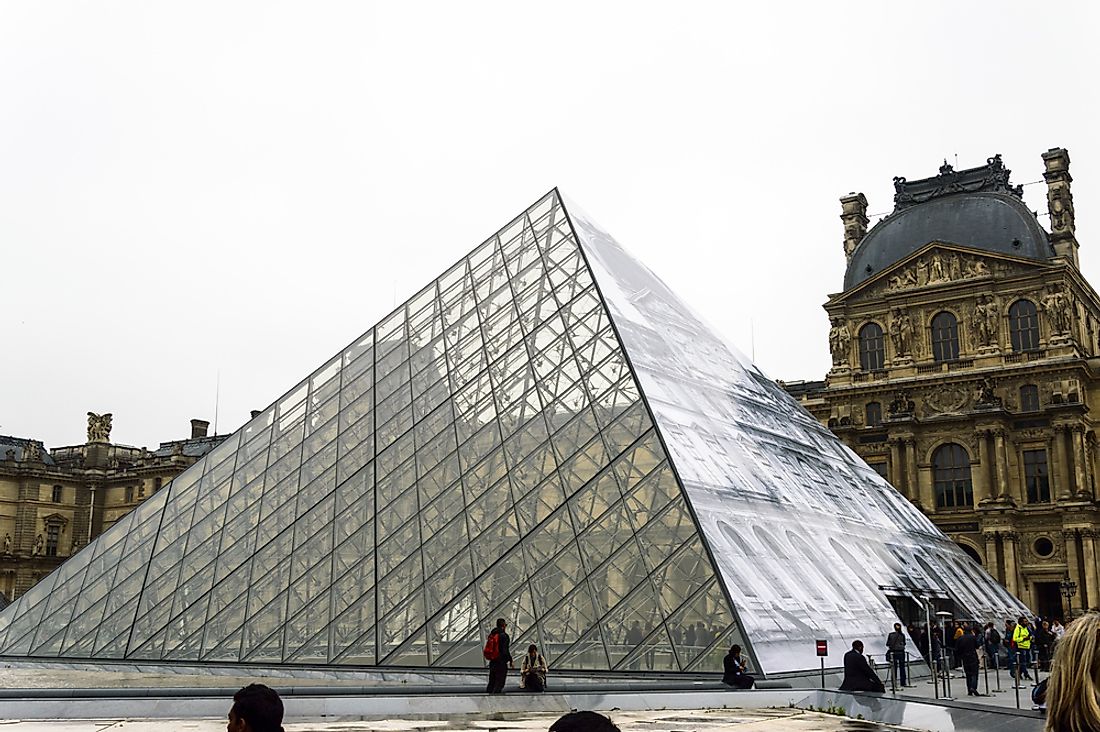Architectural Buildings of the World: Musee du Louvre

Paris is home to the world's largest museum, the Louvre Museum. The Louvre recorded 7.4 million visitors in 2016 to be the second most visited museum in the world. The Museum lies in River Seine's Right Bank in the 1st Arrondissement of Paris.
History
The Louvre Museum is in the Louvre Palace, which has existed since the 12th century when it was first used by Philip II as a protection from potential Viking attacks. The Palace was frequently redesigned in the middle ages. Charles V, for example, made it a residence in the 14 century while Francis I incorporated the French Renaissance style in renovation works. After Louis XIV had relocated to Versailles, the Louvre Palace became a residence for artists. The Louvre Palace became a public museum during the French Revolution. It was officially opened on August 10, 1793, and it exhibited objects of art and paintings. Napoleon I appointed the first director of the museum named Dominique Vivant Denon. The Museum acquired the name ‘Musée Napoléon, ' and it displayed works from Italy, Austria, Spain, and the Netherlands which had either been acquired through treaties or as spoils. Napoleon also made an expedition to Egypt and made significant discoveries such as that of the Rosetta Stone. In the course of the Restoration (1814-1830), the museum's collection was expanded to include a department of Egyptian antiquities. The Museum was heavily damaged and also partially looted by the socialist revolutionaries allied to the Commune of Paris. The Louvre Museum was extensively renovated under the French President Francois Mitterrand to include the Grand Louvre Pyramids.
Collections
The Louvre Museum is home to more than 380,000 objects, and it exhibits 35,000 art pieces in eight different areas. The Egyptian antiquities department has more than 50,000 pieces spanning different stages of the Egyptian life such as the Ptolemaic, Roman, and Byzantine periods, Ancient Egypt, Coptic Art, and the New Kingdom. The New Eastern antiquities department is divided into Persia (Iran), the Levant, and Mesopotamia (Iraq). The Greek, Etruscan, and Roman Department exhibit antiquities from the Mediterranean Basin between the Neolithic to the 6th century. The Museum's newest department is the Islamic Art that displays items such as carpet, glass, ivory, ceramics, textiles, metalware, and miniatures spanning 13 centuries and three continents. The sculpture department showcases work curated before 1850 and which is not included in the Greek, Etruscan, and Roman department. Other departments in the museum are Painting, Decorative Arts, and Prints and Drawing.
Tourism
An average of 15,000 visitors flock to the museum on a daily basis, and 65% of this number are foreign tourists. The top foreign tourists recorded in the museum are from the US, Italy, China, Germany, and Great Britain. 50% of the visitors are under 30 years of age. The Louvre Museum admits certain groups of visitors free of charge including visitors with disabilities, those under 18 years of age, people on benefits, or EU residents below the age of 26. The Museum's 2.3 million fans on Facebook make it the most followed Museum on the site.
Satellite Museums
The Louvre-Lens was established in 2015 in the town of Lens in Northern France as a satellite museum of the Louvre Museum. The Louvre-Lens displays pieces lent by the Musée du Louvre on either a long or medium-term basis. Another satellite museum is under construction on Saadiyat Island, Abu Dhabi. The museum will showcase artwork from various parts of the world, and it is intended to bridge the proverbial gap between Western and Eastern Art.











